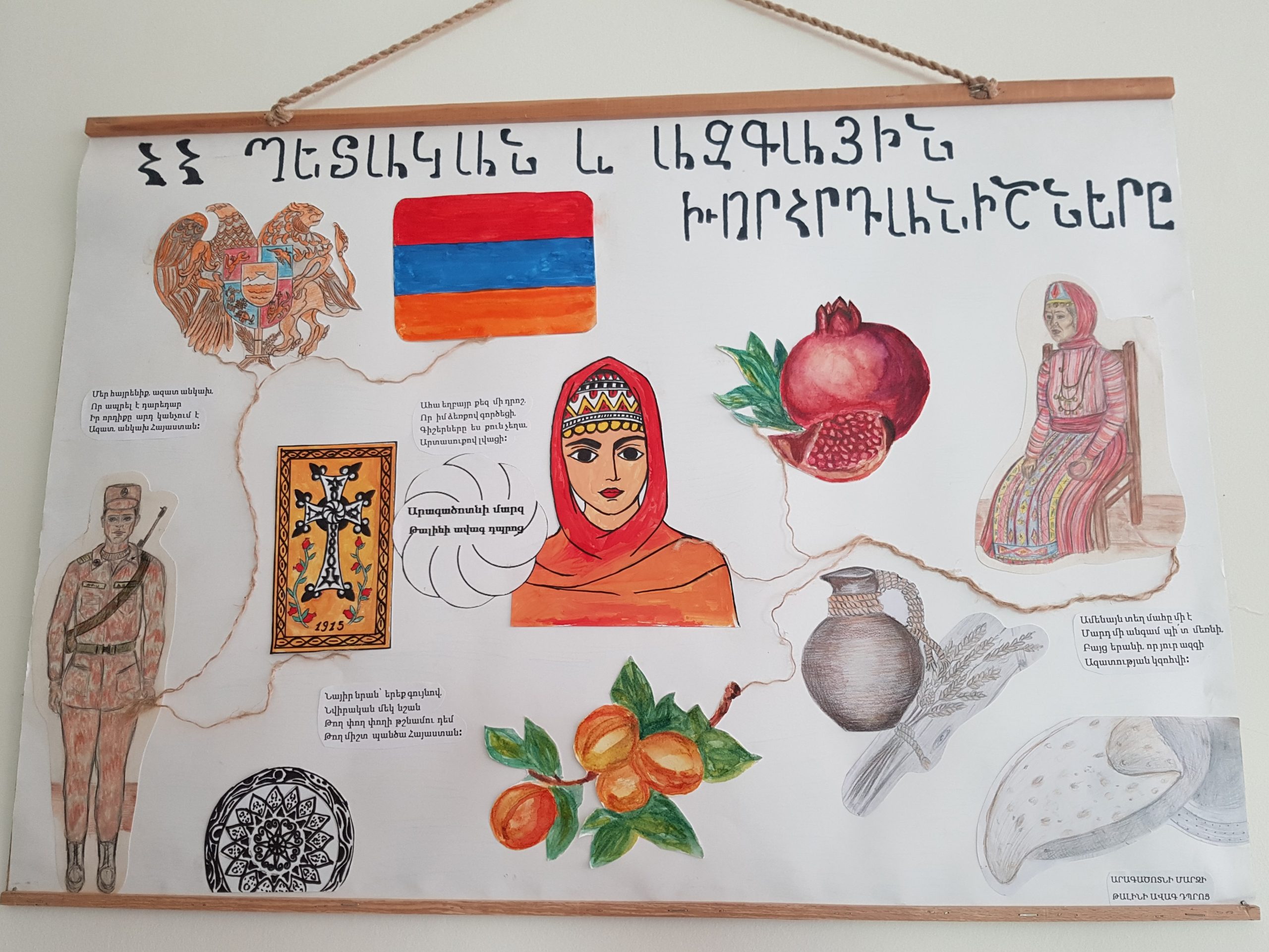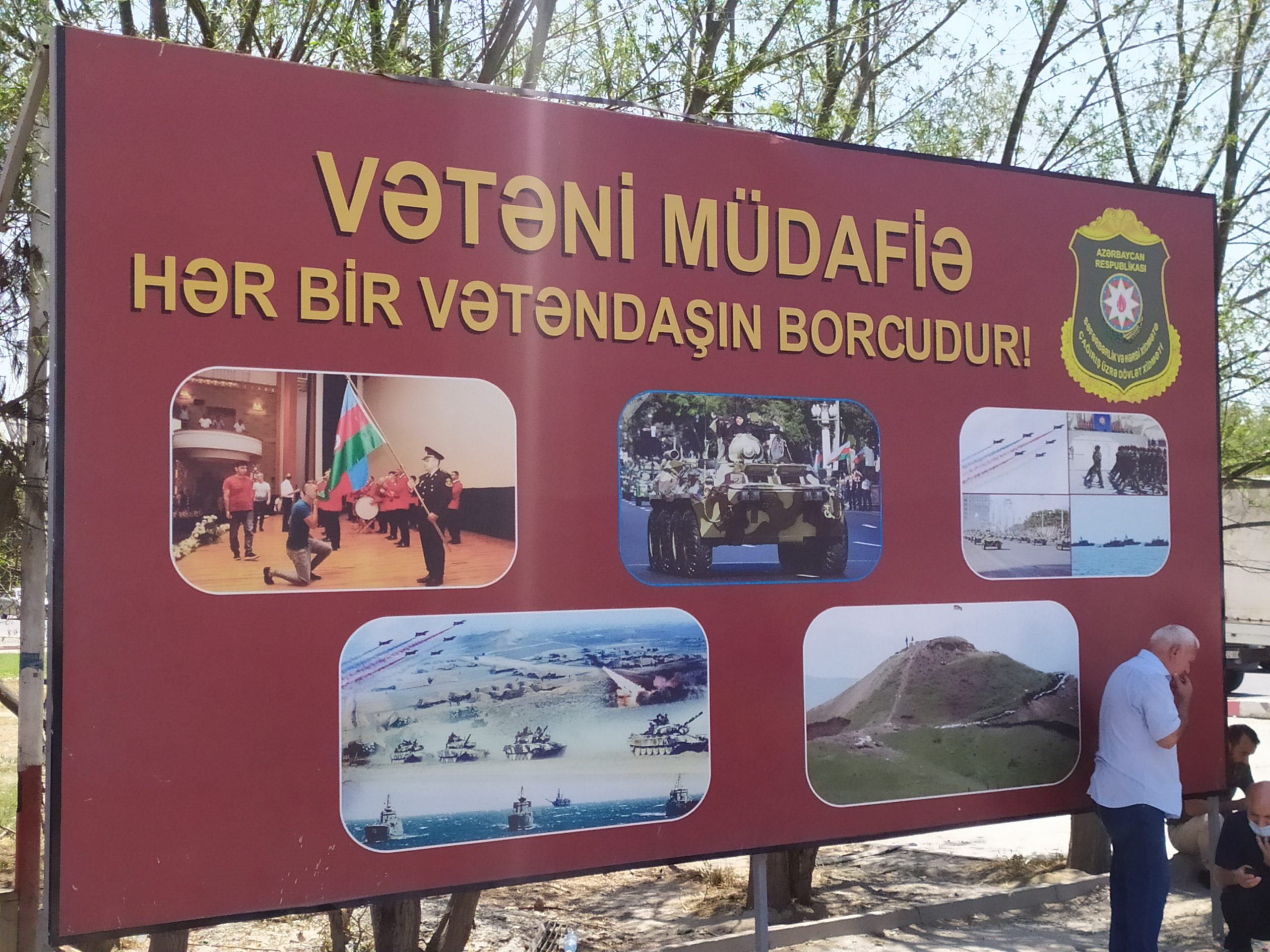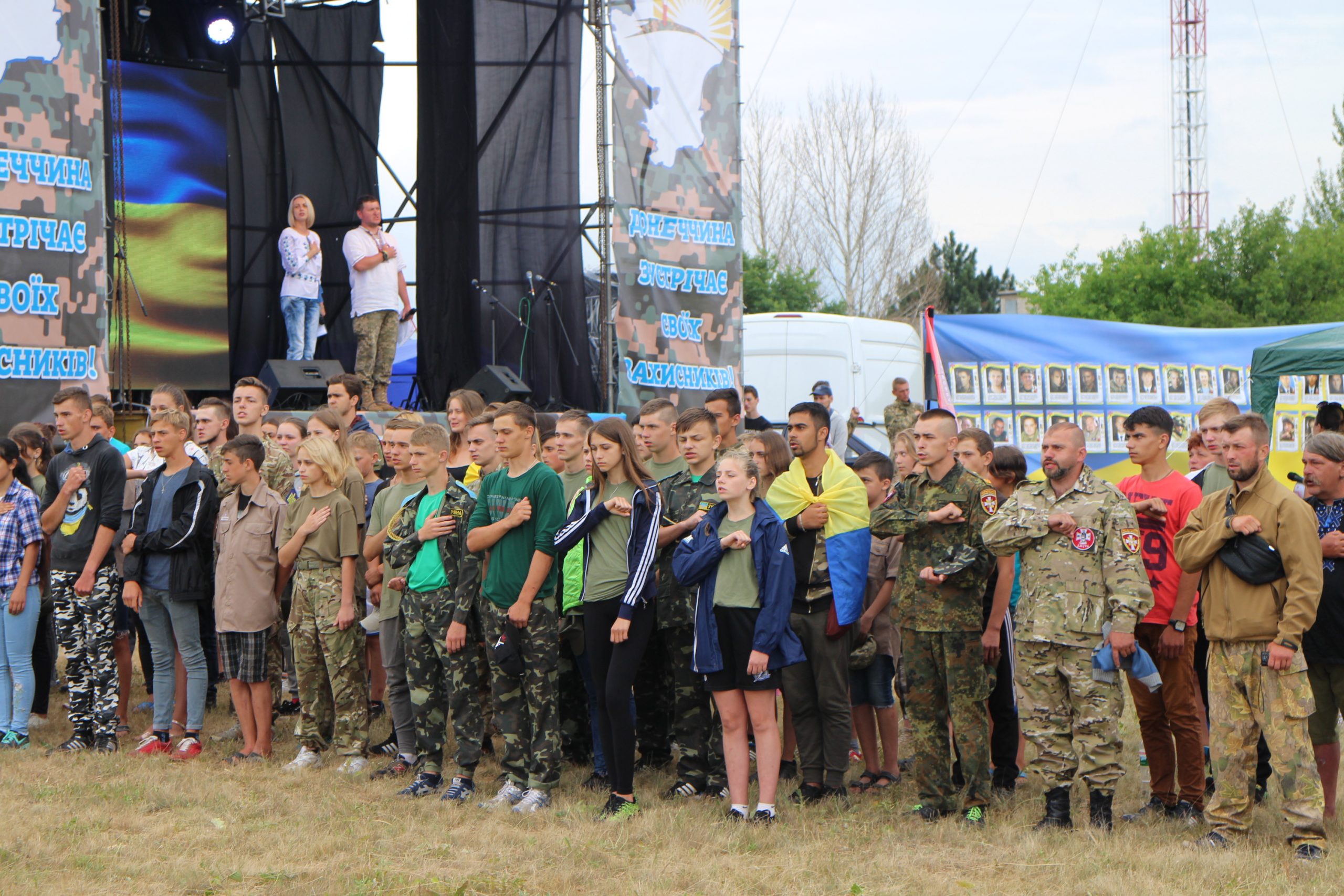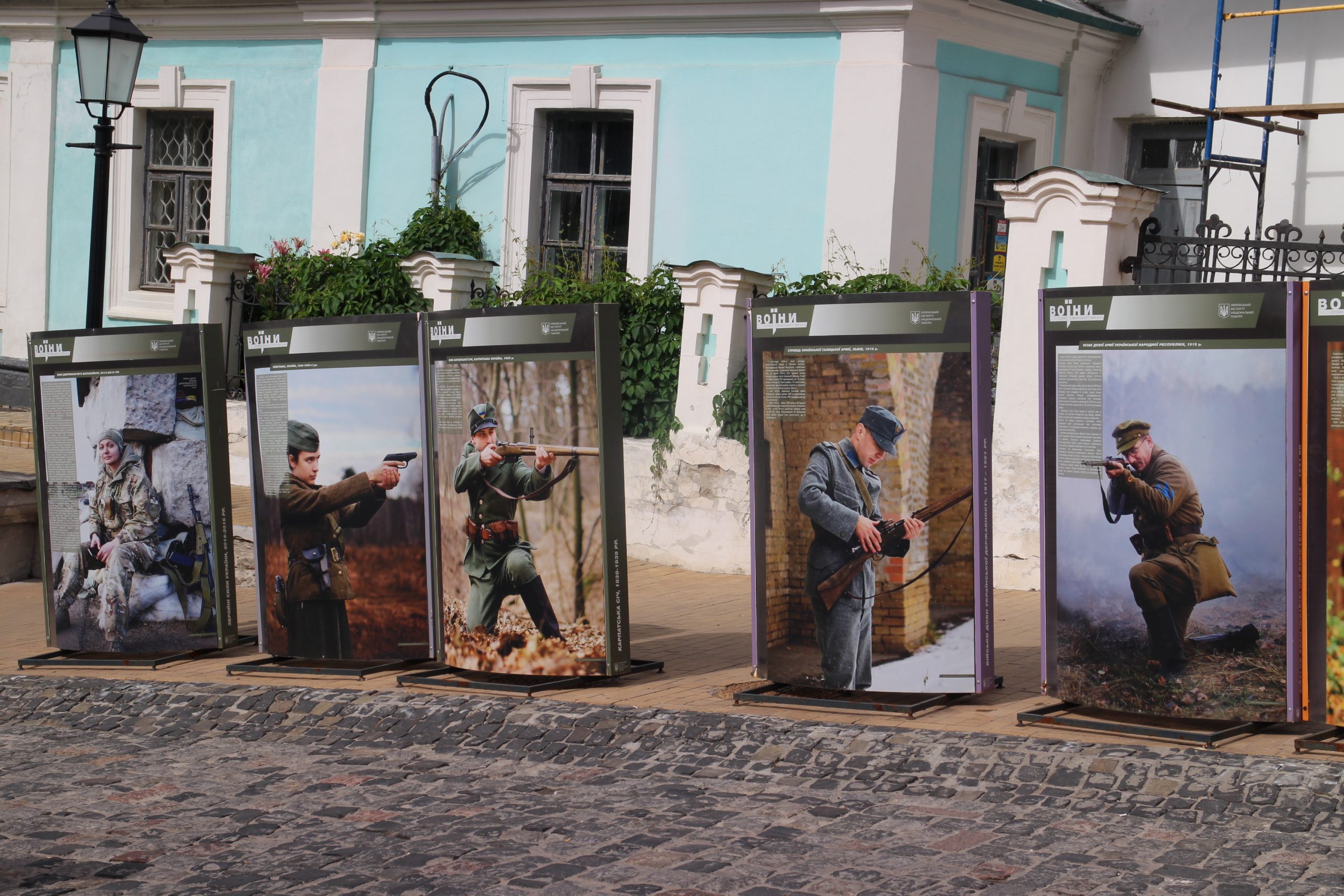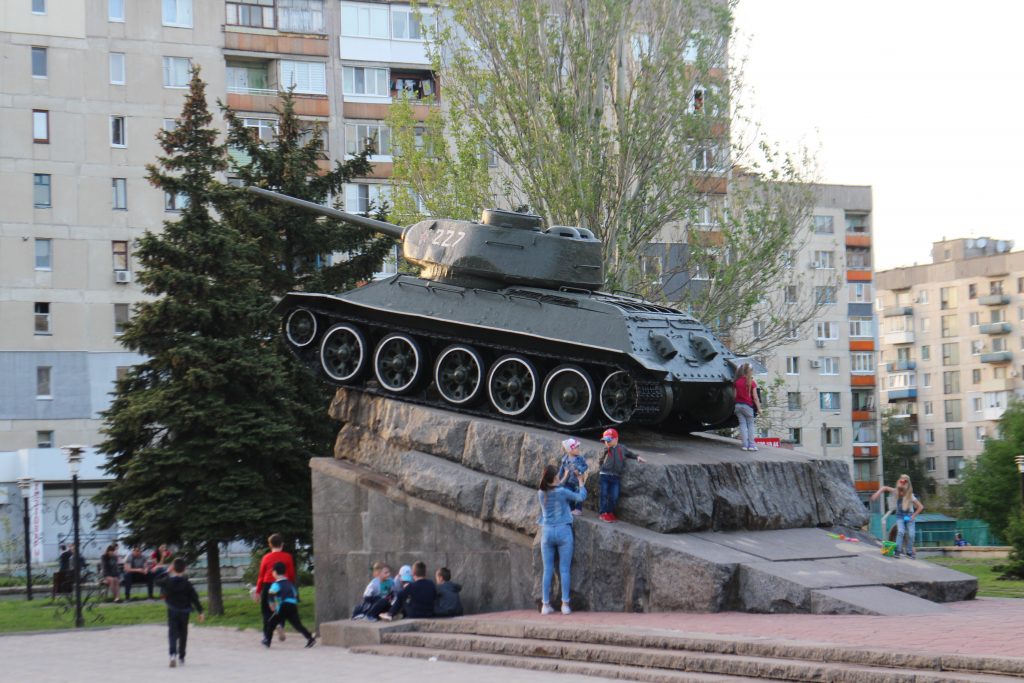
Conflicts and militarization of education. An Introduction.
Totalitarian institutions in secondary schools and in the system of extracurricular education in Azerbaijan, Armenia, Ukraine and Russia
by Sergey Rumyantsev
The influence of the army has been increasing rapidly in Azerbaijan, Armenia, Russia, and Ukraine. A wide variety of paramilitary youth associations and movements related to this total institution[1], militaristic volunteer organizations, and groups of nationalists that propagate far-right ideas become more and more vocal. Militaristic institutes, discourses, practices, and rituals gain momentum and become increasingly more visible in the public spaces. One of the reasons behind these developments is the armed conflicts lingering for years and decades.
In all the studied countries, despite some differences, the army is built around mandatory conscription. Thus, a significant part of youth, especially men, find themselves within the authority of this total institution “where a large number of like-situated individuals, cut-off from the wider society for an appreciable period, together lead an enclosed, formally administrated round of life”[2]. However, for many years now militarization of the society is not limited to mandatory army service.
The institutes of secondary education that are under near-complete control of the political regimes in the four countries of focus are an ideal channel for dissemination of militaristic practices, military-patriotic discourses, and rituals. As rightfully noted by Seth Kershner and Scott Harding about the United States, “schools are a primary site for socialization into societies that support war”[3].
All the societies examined in this review have gone through the process of similar “socialization,” although to a varying degree and at different times. Despite some differences, there are many similar trends and strategies of the militarization of the societies in these countries. The strengthening of the army or the increase in military budget is justified by the necessity for defending the homeland. The instigation of the conflict, and the inability to prevent it or reach a resolution, are always blamed on external forces with no introspection. Each political regime insists on its own rightness and attempts to divert criticism by labeling it as “anti-patriotic” or “anti-national”[4], (“pro-Armenian”, “pro-Russian”, “pro-Western”, etc.), thereby aiming at marginalization of domestic political opponents.
Political regimes in different countries show striking similarities in methods and practices of suppressing political dissent. Although in different ways, the Russian and Azerbaijani authoritarian regimes are actively using the categories “fifth column” and “national traitors”. It is no coincidence that Vladimir Putin returned using these categories immediately after the referendum in Crimea, which became an essential component of the annexation procedure of the peninsula[5]. In the last few months alone, over the spring and summer of 2020, President Ilham Aliyev has accused the opposition of betraying national interests at least three times in the strongest possible terms. The last of his lengthy speeches was during the July escalation of the Nagorno-Karabakh conflict[6].
The conflicts that persist because of this militarization and military-patriotic propaganda lead to the death of the own citizens of the states: both as military personnel and civilians. Even in the case of conflicts that are considered “frozen” for a long time (for example the Nagorno-Karabakh conflict), the constant causalities along the line of contact have become the expected norm. The killed citizens (military personnel and civilians) then become a “resource” that fires up the revanchist and patriotic sentiment and supports further militarist rhetoric and mobilization both in Armenia and Azerbaijan.
In Ukraine and Armenia, where political regimes after Euromaidan and the Velvet Revolution seek to emphasize their commitment to democratic and “European” values, there are largely similar discursive practices of marginalizing the “internal enemy”. Armed conflicts in these countries have also long been an essential component of establishing legitimacy. The publication of inconvenient records of phone calls of the fifth president of Ukraine Petro Poroshenko becomes the reason for another reference to the intrigues of the “fifth column of the Kremlin”[7].
For “pro-Western” politicians in Armenia their “pro-Russian opponents” are the same fifth column. Many politicians, public intellectuals, and scholars in Armenia describe as treacherous any attempt to establish a dialogue with Turkey or Azerbaijan. In the summer 2020, amid the escalation of the Nagorno-Karabakh conflict, a huge scandal erupted in Armenia around the discussion of new standards for teaching “History of the Armenian People”[8]. Some members of the commission working on the standards were accused of collaborating with Turkish historians and betraying national interests[9]. The toxic particularist political discourse on “internal enemies” infiltrate into different areas, including school.
The conflicts that persist because of this militarization and military-patriotic propaganda lead to the death of the own citizens of the states: both as military personnel and civilians. Even in the case of conflicts that are considered “frozen” for a long time (for example the Nagorno-Karabakh conflict), the constant causalities along the line of contact have become the expected norm. The killed citizens (military personnel and civilians) then become a “resource” that fires up the revanchist and patriotic sentiment and supports further militarist rhetoric and mobilization both in Armenia and Azerbaijan.
Secondary schools[10] are the most important institutions of primary socialization for all future citizens of a given country. In a conflict context, these schools are turning into institutions that produce militarist and revanchist-minded patriots, future soldiers, and officers who are ready to sacrifice their lives for the theoretical future of their nation states. Military education, a legacy of the Soviet Union, is a standalone subject that has been reintroduced to secondary schools in one form or another.[11] In each of the four studied countries, new strategies for educating “future patriots” from children and teenagers are being developed and put into practice. The same applies to extracurricular activities.
Secondary education, which is one of the most important periods of primary socialization of an individual, once militarized can deprive societies of the chance for successful peaceful transformation of conflicts. This analytical review of the situation in the four post-Soviet countries will not only draw readers’ attention to the obvious general trends around this issue but will also enable them to see the specifics of the process of militarization of societies in each country.
Constrained by the word-count limits, the co-authors of this article only briefly touched upon the most important components of the militarization of secondary education in Azerbaijan and Armenia, Ukraine and Russia. Undoubtedly, the subjects of national history and literature in schools play a paramount role in the process of military-patriotic education of future citizens. There are also other channels for dissemination of militaristic and revanchist discourses, such as mass media.
In their analytical reviews, several authors merely touch on the question of the wide grass-roots support of the militaristic type of nationalism. Obviously, all four societies have long existed in discursive spaces of banal nationalism[12]. It is also obvious that many social actors not involved in any political activity are wishing to invest their personal, intellectual, financial, and symbolic resources in the construction of revanchist and militaristic discourses, ideologies, and the creation of paramilitarist organizations. Those would include nationalist-minded parents, who are often highly active in the school education process. The topic of militarization “from below” is increasingly addressed in analytical surveys on Ukraine.
In addition, the authors also touched upon the important issue of the “effectiveness” of the programs, practices, and discourses of military-patriotic education and related extracurricular activities persistently carried out at the secondary school level (this topic is covered in more detail in the article by Jafar Akhundov). How “successful” are the political regimes that sponsor cooperation between institutes of secondary education, the army and the Ministries of Defense in the endeavor to implant militaristic patriotism? How “effective” can different (semi) independent social agents be who participate in this process? To what extent can these agents’ ideas about “right patriotism” differ from the policies of the ruling regimes? All these important questions require further research.
Despite these limitations, this review points to an alarming trend. Not only the government but also various (semi) independent social groups, organizations, and agents heavily invest significant financial and symbolic resources in the propaganda of militaristic and revanchist ideology. Militaristic components and nationalistic discourses play an increasingly central role in the education of all four countries. War and military escalation are presented as normal and the only right way of achieving “just peace.”
As this analytical review series was getting ready for publication, two other trends emerged that give a reason for cautious optimism.
So far, the attempts of the new Ukrainian authorities to achieve a de-escalation on the contact line and to establish a dialogue with the Russian political regime were cause for cautious optimism. The attempt to bring into force a new ceasefire regime in July 2020 should be regarded as a positive precedent, even if it cannot be sustained for a long time. There is still hope that it will prevent further loss of life and the chance for a real ceasefire is not lost. However, this success is overshadowed by negative trends. The efforts of the new Ukrainian government aimed at a peaceful conflict resolution are visibly losing their momentum[13]. Considering the positions of Russia and the self-proclaimed republics, integration of the uncontrolled territories of Ukraine appears unlikely in the nearest future.
And in 2018 and parts of 2019 there has been optimism raised around the possibility of revival of a meaningful peace process around Nagorno-Karabakh. The recent developments, however, suggest the prospects for renewed negotiations and dialogue did not materialize.
The last meetings of the two presidents in public were accompanied by heated debates that once again showed the impossibility of dialogue[14]. The July escalation on the border between the two states, in turn, demonstrated the readiness of the conflict parties to a tough (albeit short-term) confrontation. After the April 2016 escalation, the Azerbaijani political regime invested significant resources in creating the myth of “April Victory”, proving the technical and moral superiority of the Azerbaijani army over the Armenian one. As a result of the July escalation, the populist Nikol Pashinyan got involved in a similar game, investing in the myth of “the obvious victory of the Armenian force, thought and military-industrial complex”[15]
Not only public intellectuals but also many ordinary people in both countries demonstrated the influence of revanchist nationalist ideologies, militarist discourses and patriotic education, as in the days of the April escalation. The analysts and journalists have engaged in ever-popular discussions about the “first shot”. Social networks and media were filled with patriotic appeals and revanchist slogans, radical racist outbursts. Tens of thousands of young people took to the streets of Baku despite strict quarantine and without the sanction of an authoritarian regime trying to strictly control all public spaces and actions. They demanded mobilization and war to a victorious end. This event once again showed that the Azerbaijani government using the conflict with a purpose to legitimize itself became a hostage of a three-decades-long confrontation, a policy of constructing an enemy image and militarization of society. The Armenian political regime is in a similar situation. The conflict has long been developing by its own logic which is largely beyond the control of politicians.
A symbolically significant component of the latest escalation was the internationalization of the conflict. Clashes between ethnic Azeris and Armenians took place abroad in the US, UK, Belgium, Russia, and in some other countries. This moment in the development of the conflict was predictable. According to Mary Caldor, in almost all new nationalisms, diasporas are playing a much more important role than before due to the increased intensity of communication[16]. Numerous activists from the Armenian diaspora, as well as activists and ethnic entrepreneurs from much less numerous and consolidated Azerbaijani migrant communities, have been involved in the Nagorno-Karabakh conflict since its beginning. Some diaspora Armenians took part in the military operations in the early 1990s.[17] In the same years, active ethnic Azerbaijani emigrants organized the collection and sending to Azerbaijan of medicines, basic necessities, clothes for refugees and soldiers.
Over the decades, the Azerbaijani regime has invested significant administrative, financial, discursive, and symbolic resources in creating the myth of the numerous and consolidated Azerbaijani diaspora. The Azerbaijani authorities have been engaged in mobilizing and radicalizing emigrant networks for years. Clashes have happened more than once abroad, but often they did not become a major media event[18]. Violence has already occurred abroad and outside diaspora networks. The crime of Ramil Safarov, who killed an Armenian officer at a NATO training course in Budapest in 2004, was the most important event in the internationalization of the conflict. The main novelty of the recent clashes is their wide geography and a clear increase in the number of actors involved in the violence. One should be prepared that such clashes become a permanent component of the Nagorno-Karabakh conflict.
Much remains unchanged in the development of the conflicts. The increasing militarization of secondary education indicates that the governments are preparing the societies not for peace but for the future military escalations and wars. The significant investments into the propaganda of enemy image and military-patriotic education are countered by only weak and unpersuasive attempts to develop the dialogue process on the political level. The obstruction of development of relations at the civil society level is still ongoing.
First published in “Caucasus Edition: Journal of Conflict Transformation”.
The text was significantly expanded and finalized for this publication.
1.See more: “On the Characteristics of the total institutions” см: Erving Goffman (1990), Asylums: Essays on the Social Situation of Mental Patients and Other Inmates, New York: Anchor Books, p. 1-124.
2. Ibid., p. XIII
3. Kershner S., Harding S. (2019), Militarism goes to school // Critical Military Studies, Vol. 5, No. 3, p. 191-194, pp. 191.
4. Different parties to the conflict carry a different level of responsibility for conflict escalation. For example, even with all its complexities the conflict in Eastern Ukraine never would take such a large-scale and bloody turn without Russia’s direct military intervention there.
5. See: the address of the President of the Russian Federation (18 March 2014), http://www.kremlin.ru/events/president/news/20603; The large press conference of Vladimir Putin (18 December 2014), http://kremlin.ru/events/president/news/47250
6. See: A meeting of the Cabinet of Ministers was held under the chairmanship of President Ilham Aliyev on the results of socio-economic development in the first half of 2020 and the tasks ahead, https://ru.president.az/articles/39645
7. Petr Poroshenko: The fifth column of the Kremlin launched a large-scale special operation against Ukraine, https://www.youtube.com/watch?v=_zVZkWriZPo
8. The scandal unfolded not only in the media, but also in social networks.. See.: Armenian historians have fallen into a Turkish trap. The director of the Institute of History explained why.
https://newsarmenia.am/news/politics/armyanskie-istoriki-popali-v-turetskuyu-lovushku-direktor-institua-istorii-obyasnil-pochemu/; Haik Khalatyan, Where the Armenian education of “undrownable” Araik Harutyunyan is going to take us?
https://verelq.am/ru/node/70766; Lilit Mkrtchan: ” Let’s sit down together and decide what kind of education should be provided”, https://verelq.am/ru/node/70678
9. The research of a large group of authors from Turkey and Armenia, which caused a rapid surge of nationalistic emotions in Armenia is on the website of the journal: Caucasus Edition. Journal of Conflict Transformation. См: History Education in Schools in Turkey and Armenia. A Critique and Alternatives, https://caucasusedition.net/?s=History+Education+in+Schools+in+Turkey+and+Armenia.+A+Critique+and+Alternatives+
10. Including related extracurricular education organizations and practices (summer camps and others).
11. Armenia and Azerbaijan reintroduced the subject many years ago. In Ukraine, the subject “Protection of Fatherland” was introduced at the high school level during the presidency of Petro Poroshenko. In Russia, while there is no mandatory subject present called military education, the network of “cadet classes” becomes increasingly popular (see below).
12. Billig M. (2014), Banal Nationalism, Sage: London.
13. Yakubin O. and Golubnichniy B. Ending the war in Donbas. The elusive chance of Zelensky’s team
https://commons.com.ua/uk/prekrashenie-vojny-na-donbasse-uhodyashij-shans-komandy-zelenskogo/?fbclid=IwAR3Wll-yCmMFFtH7laQei3BksVWlOaikEZhVQgioLEw7rvNkq3T5Ft22s4c
14. See: “Updates on the Karabakh Conflict”. Debates of Ilham Aliyev and Nikol Pashinyan in Munich, https://www.youtube.com/watch?v=AQpIIU8c7oo
15. See: Our positions have been strengthened: Nikol Pashinyan imposed seven conditions, https://www.lragir.am/ru/2020/07/23/179711/
16. See more: Kaldor M. (2012), New and Old Wars: Organised Violence in a Global Era, Cambridge: Polity (2015), p. 90-93.
17. The most famous of them was Monte Melkonyan.
18. In May 2007, a clash between ethnic Armenian and Azerbaijani students, ironically, took place within the building of the Russian University of Peoples’ Friendship. The cause of the clash was the flag of unrecognized Artsakh (Nagorno-Karabakh). Agali Alyshov was wounded in the clash. In 2020, the same Alyshov, but now an awarded boxer, and a long-term German resident, was actively involved in organizing a protest, held on July 18 in front of the Armenian Embassy in Berlin.
Often the coverage of events, for the most part, does not go beyond the regional media. As, for example, the murder of a former Azerbaijani football player by an Armenian sportsman in Yekaterinburg, in April 2015. Such events are often quickly ethnized and politicized, brought to the collective Diaspora level. Even when these cases of violence are domestic in nature. For example, after the murder in Yekaterinburg, the theme of provocation on the eve of the century of the Armenian genocide was sounded. The idea of reconciliation between the diasporas was put forward.
See: Does Perestoronin fuel national conflicts? https://yarutins.livejournal.com/tag/%D0%9F%D0%B5%D1%80%D0%B5%D1%81%D1%82%D0%BE%D1%80%D0%BE%D0%BD%D0%B8%D0%BD
Or remained a little visible in the context of many other news. See, for example: Azerbaijani activists were beaten at the parliament building of France., https://lenta.ru/news/2013/02/27/france/; Delegations of Azerbaijan and Armenia got into a fight at “Immortal Regiment” rallies in Moscow and St. Petersburg., https://www.kavkaz-uzel.eu/articles/302422/
